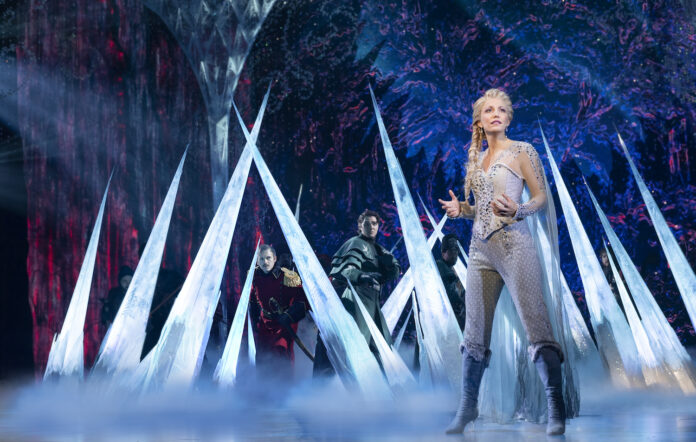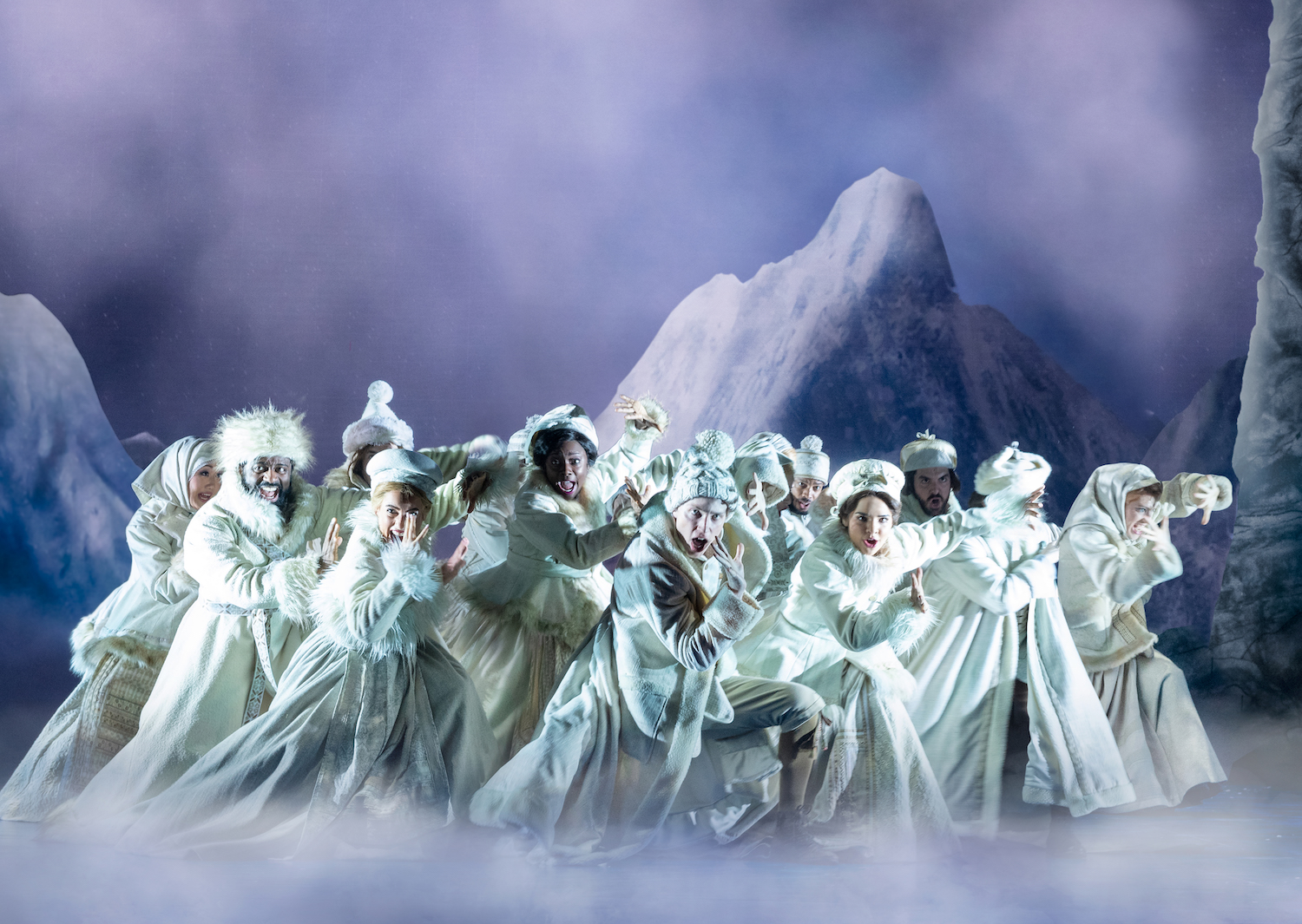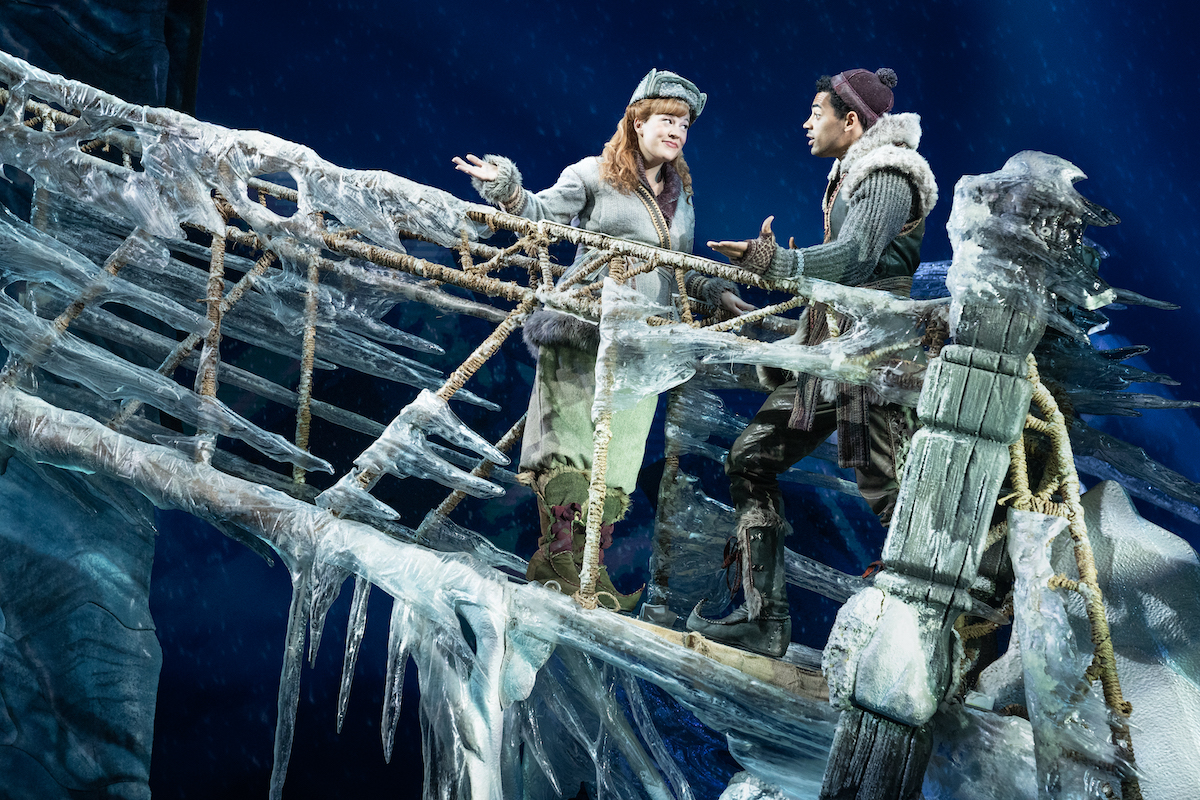
After an icy blast from her uncontrollable snow powers nearly takes the life of her sister Anna, Elsa retreats into isolation, shutting herself off from the world and giving it the cold shoulder.
But years later, as Elsa belts an electrifying “Let It Go,” she transforms from a quivering young girl into a free, confident woman. Her dazzling costume change into a pale blue shimmering dress matches her surrounding swirling snow flurries and majestic icy crystals.
The message Elsa finally learns is clear: let go of the past, and don’t hold back. This theme is central in Frozen, which ran at the National Arts Centre from Feb. 22 to March 3.
Based on the Disney film, with music by Kristen Anderson-Lopez and Robert Lopez, and book by Jennifer Lee, Broadway Across Canada’s production is all flurries and fun, with hints of childlike wonder.

Elsa’s snow powers plunge the Kingdom of Arendelle into an eternal winter while she flees to a mountain in isolation. Anna, determined to mend their relationship, embarks on a journey to find her sister. On her way, she stumbles upon ice harvester Kristoff, his reindeer Sven and a summer-obsessed talking snowman named Olaf.
The premise of Frozen is simple enough. Girl, boy, reindeer and snowman embark on a quest, cultivating friendship along the way. But what Frozen achieves best is its tender depiction of sisterly love, which transcends every tribulation. Though it’s not the deepest or most emotionally stirring musical, Frozen achieves what it sets out to do: Empower audiences to walk away with big smiles and heaps of giddiness.
Songs pulled from the film including “Do You Want To Build a Snowman?” and “Love Is an Open Door” elicit a familiar warmth with magical layers of harmonies. The stage adaptation also included new songs, notably “Fixer Upper,” a lively group number which the ensemble performed with well-placed inelegant flair and gusto, contrasting their poised demeanour during Elsa’s coronation.
Caroline Bowman portrayed Elsa with queenly sophistication, while depicting her character’s edginess through her fear of her powers. Bowman was both dutiful and poised with royal posture, then agitated and tremorous as she shunned others away. Act 1 closer “Let It Go” was a turning point of grandeur thanks to Bowman’s unwavering vocals and her escalation into flourishing confidence.
Contrasting Bowman’s frosted Elsa, Lauren Nicole Chapman’s Anna is unapologetically sunny from the beginning. Chapman delivered her spoken lines with punchy comedic timing, while her singing carried a delicate naiveté, particularly in “For the First Time in Forever.” Her spirited vibrancy balanced out Dominic Dorset’s pragmatic Kristoff. The two even share a charming duet, “What Do You Know About Love?,” where they playfully banter over their opposite views on romance.

Frozen is a delight thanks to its colourful characters. Dan Plehal’s waggish Sven and Jeremy Davis’s endearing puppetry as Olaf provide much amusement to counter Anna and Elsa’s personal conflicts. Engulfed by Christopher Oram’s graceful set design, which included an icicle-laden bridge and dazzling icy canopies, the show was an extravagant performance evoking wonder and magic.
However, the show was not without its faults. Preston Perez’s deceitfulness as Anna’s fiancé, Hans, was unconvincing due to bland characterization and a rushed second act. Some aspects of the production, such as “Hygge,” a six-minute disjointed group number, also failed to serve a purpose other than brief moments of comic relief.
But ultimately, Frozen was a simple story brimming with joy. That simplicity played a part in the show’s success, because Anna and Elsa’s uncomplicated sisterly bond is the story’s emotional centre. And as they learn to move onward and let go of the past, they also learn that their love can defrost any troubles that stand in their way.
Featured image by Deenvan Meer/Broadway Across Canada.





